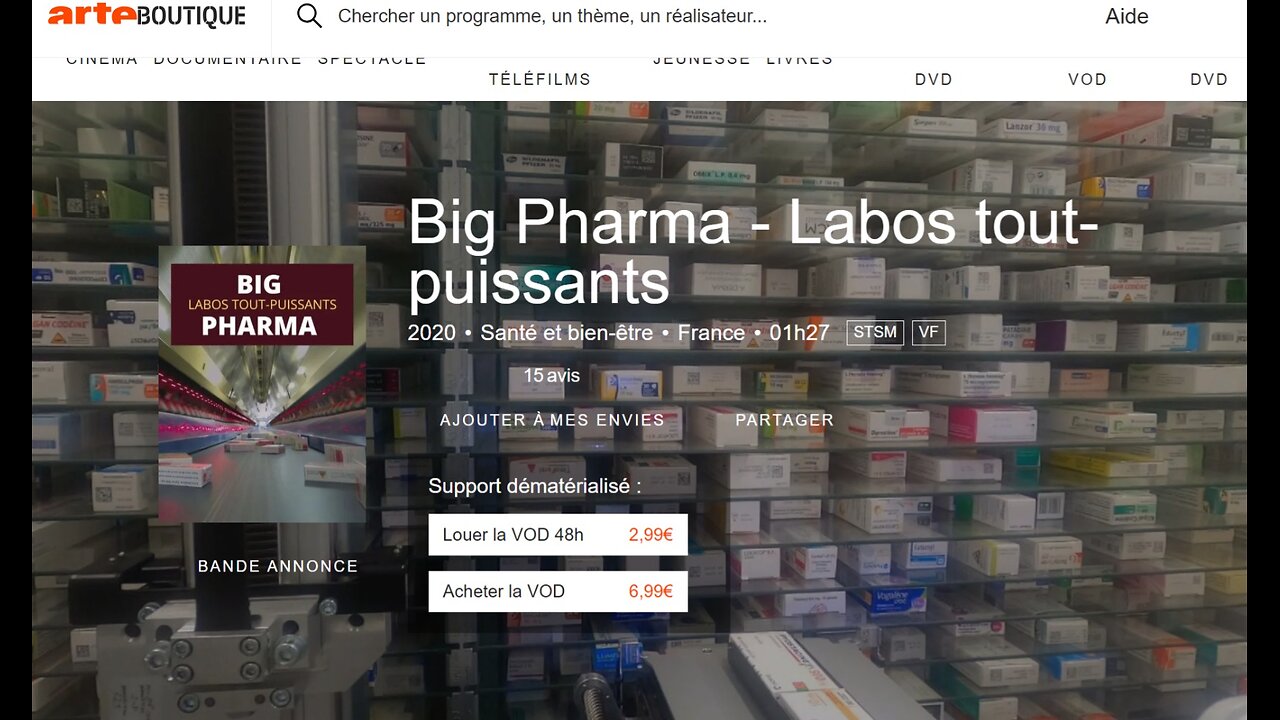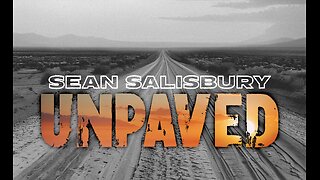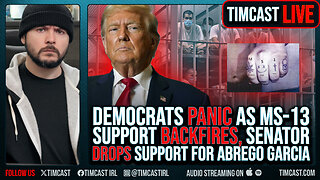Premium Only Content

Losers and winners in the big pharma
Losers and winners in the big pharma
A review and a daily podcast with frighteningly naive journalism - what else would you expect from compulsory fees?
------------------------------------------------------------------
https://www.amazon.fr/stores/Dr.-Bodo-Schiffmann/author/B07RG7NBGX?ref=dbs_a_mng_rwt_scns_share&isDramIntegrated=true&shoppingPortalEnabled=true
https://www.researchgate.net/profile/Bodo-Schiffmann
https://www.alamyimages.fr/photos-images/bodo-schiffmann.html?sortBy=relevant
--------------------
https://boutique.arte.tv/detail/big_pharma_labos_tout_puissants
------------
#1: Keep it short, sweet and relevant.
Webinar titles play an important role in helping people make in-the-moment decisions about what content to engage with – whether that action is clicking on a promotional email, registering for a webinar or watching an on-demand recording. As a result, your title should communicate the webinar’s core value prop.
A good webinar title doesn’t leave the audience wondering what they’ll gain from watching it. Your best webinar titles answer a critical question or help your audience achieve a valuable goal.
Creating impactful webinar titles is especially important because the title influences many areas of promotion – showing up as subject lines, appearing in search engine results or getting embedded in brand messaging. Keeping a title within 60 characters is a good rule when it comes to avoiding any embarrassing cutoffs in email promotions, but subject lines on mobile devices can become cut off after 20 to 30 characters, so both should be considered when drafting titles.
Frontloading keywords, phrases and relevant messaging is key to quickly capturing your audience’s attention! If you feel you have to go longer than 30 or 60 characters, make sure you won’t be losing the most valuable part of your subject line if it’s cut off.
For an example of a bad webinar title, consider this one: The Competitive Benefits of Enacting Digital Transformation for Your Customer Experience & CRM Workflows. The title is too long, the term digital transformation is vague and the title offers little value to viewers outside marketing buzzwords.
Instead, use a quality title like Top 7 Advantages of Integrating Chatbots with Humans in CX Workflows, which is much more specific about what viewers will gain by attending, offering concrete value to convert potential viewers.
#2: Don’t rely on clickbait.
We’ve all seen them before – webinar titles or subject lines that try to be funny or stand out from the pack but end up falling flat. Some humor is appropriate in the right webinar, but when it comes to titling them, it’s best to avoid trying to be too clever.
A good webinar title lets the content drive interest, instead of relying on humor or puns that might be misinterpreted. Additional elements you should use very sparingly when crafting your webinar titles are region-specific idioms (i.e., “knock it out of the park”), frequent exclamation points and emojis. These elements often detract from the message and can be read as less professional to viewers.
#3: Use quality keywords in your title.
Choosing the right keywords impacts everything from SEO performance to audience interest. You want to write a title that has keywords people are searching for and that matches the intent of the search. This will make your webinar more discoverable and drive registration and on-demand viewership. Leveraging an SEO tool can help you determine what the strongest keywords are that match the intent of the searcher (and your target audience) and drive significant interest each month.
Here's an example of a webinar title that may drive poor SEO outcomes: AI: The New Core of Modernizing, Optimizing and Boosting the Efficacy of Infrastructure Systems. This title is super vague, uses too much high-level language and isn’t problem-specific. As a result, the webinar may drive activity, but much of this activity may be tied to individuals outside of your target audience.
Instead, opt for titles that are specific in the problems they seek to address, like How AI-enabled ITSM offloads tedious tasks from IT pros’ plates or use some of today’s top AI keywords like Drive ROI on machine learning, generative AI and NLP investments.
Keep your audience in mind and choose keywords that fit their audience profile. Be sure to include keywords in the webinar abstract in addition to the title. This approach will lead to success with both search algorithms and audience members.
#4: Tap into buyer behavior to better connect with your audience.
Most marketers are familiar with using the concept of fear, uncertainty and doubt (FUD) to drive connection with their audience. Concerns about security, impending compliance and regulation deadlines and rising costs are all driving strong content performance with tech and B2B professionals.
That’s because by showing you understand the concerns of your audience, you build trust – all before they even sign up for your webinar. FUD isn’t the only way to put yourself in your buyers’ shoes – and it should be used sparingly to avoid having the opposite effect – causing your audience to disengage with your content. By including signals that you know your buyer – their interests, needs and pain points – in your title, you’ll attract more of your target audience.
#5: Use established formats to drive registrations.
When it comes to titles and subject lines, certain established formats have been shown to drive stronger open rates. Lists, “how-to” videos and market trend overviews are tactics that are really successful in driving audience engagement – and these approaches can be translated into webinar titles. These tactics are based on our own team of marketing copywriters who have years of experience crafting eye-catching content titles and subject lines, and who’ve distilled their expertise into the core principles mentioned above and in this list below.
-
 LIVE
LIVE
RiftTV/Slightly Offensive
31 minutes agoAustin Metcalf’s Dad’s EMBARRASSING White Guilt MELTDOWN | The Rift Report
582 watching -
 32:40
32:40
The Brett Cooper Show
2 hours ago $0.40 earnedThe Feminist Celebrity Astronauts Who Saved the World | Episode 24
1.03K14 -
 1:35:12
1:35:12
Russell Brand
2 hours agoThe Pope Is Dead—What Happens Now? – SF569
102K66 -
 1:16:09
1:16:09
Sean Unpaved
3 hours agoWeekend Sports Blitz: Nico to UCLA, NFL Draft Hype, & Playoff Showdowns!
22.8K -
 21:42
21:42
SLS - Street League Skateboarding
10 days agoLuan Oliveira's Top SLS Moments: 2013 & 2014
15.7K2 -
 51:38
51:38
Grant Stinchfield
22 hours agoCollege Sports Crisis? Athletic Directors Beg Congress to Step In on Athlete Pay Chaos
9.62K -
 1:02:27
1:02:27
Timcast
3 hours agoDemocrats PANIC As MS-13 SUpport BACKFIRES, Senator DROPS Support For Abrego Garcia
151K129 -
 1:55:36
1:55:36
The Charlie Kirk Show
3 hours agoThe Next Pope? + Second Signal Chat + Maher Aftermath | Knowles, Marlow, Turek | 4.21.25
74.6K29 -
 1:08:08
1:08:08
BitLab Academy
5 hours ago $1.18 earnedCrypto Mega Pump Signal Flashing | Bitcoin Breakout, Altcoin Alt Season Starting?
28.4K2 -
 1:05:04
1:05:04
Rebel News
3 hours ago $2.81 earnedEzra Levant REACTS: Rebel's debate victory, CBC lies corrected | Q&A Livestream
34.9K14